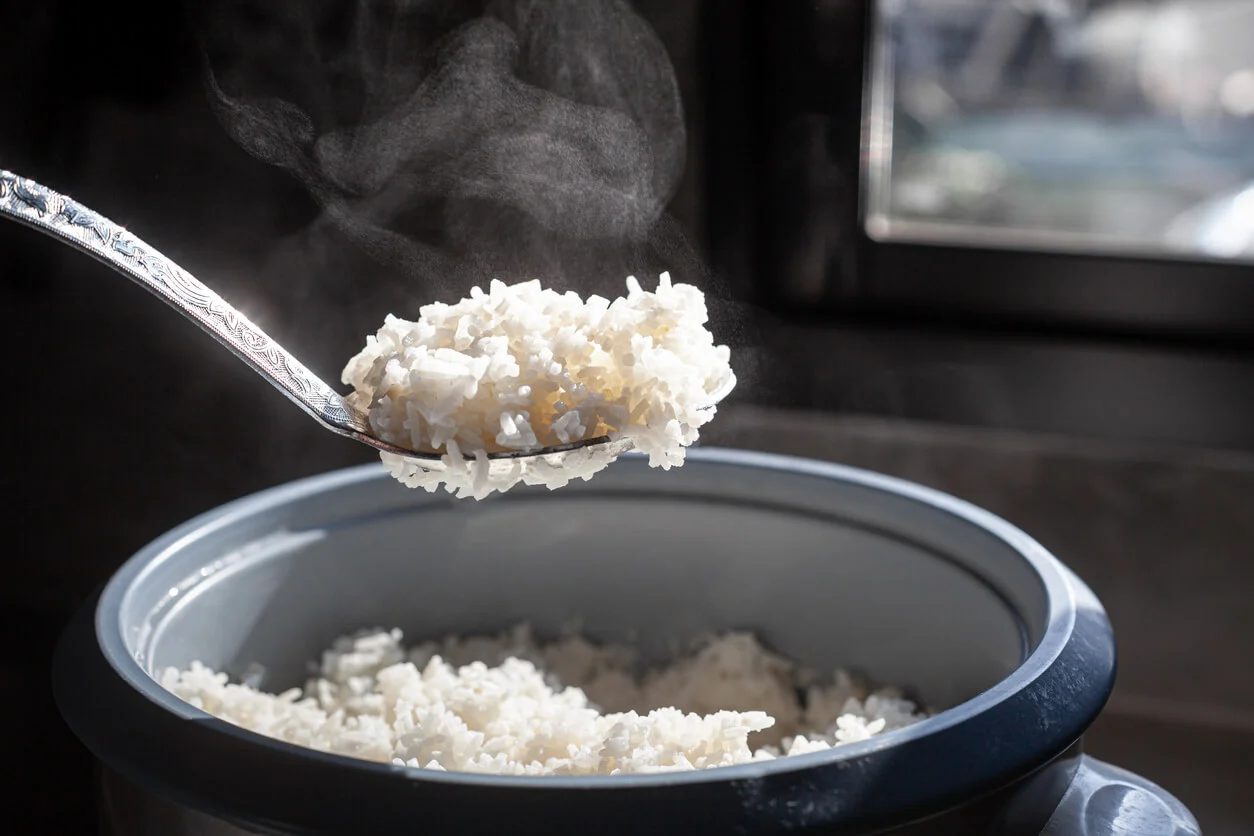

Articles
Why Is My Rice Mushy In Rice Cooker
Modified: February 21, 2024
Learn why your rice turns out mushy in a rice cooker with these informative articles. Find expert tips and tricks to achieve perfect rice every time.
(Many of the links in this article redirect to a specific reviewed product. Your purchase of these products through affiliate links helps to generate commission for Storables.com, at no extra cost. Learn more)
Introduction
There’s nothing more disappointing than eagerly anticipating a delicious bowl of perfectly cooked rice, only to end up with a mushy mess. If you’ve experienced this frustrating issue with your rice cooker, you’re not alone. Many people struggle with achieving the right texture when cooking rice in a rice cooker. But fear not! In this article, we’ll explore the common causes of mushy rice and provide you with some effective solutions to ensure your rice turns out fluffy and perfectly cooked every time.
There are several factors that can contribute to the problem of mushy rice when using a rice cooker. It’s important to understand these factors so you can make the necessary adjustments and enjoy the perfect bowl of rice every time.
Key Takeaways:
- Say goodbye to mushy rice by adjusting water ratios, choosing the right rice variety, and monitoring cooking time and temperature. Proper ventilation is key to achieving perfectly fluffy rice in your rice cooker.
- If you end up with mushy rice, don’t worry! Salvage it by adjusting water ratios, using the “Sauté” function, or repurposing it into rice-based dishes. Prevention is best, but there are ways to fix mushy rice.
Read more: Why Is My Rice Cooker Bubbling
Common Causes of Mushy Rice
1. Water Ratio Issues: One of the most common causes of mushy rice is using too much water. The ratio of water to rice is crucial for achieving the right texture. If you add too much water, the rice will become overly saturated and turn out mushy. On the other hand, if you don’t add enough water, the rice may end up undercooked and hard.
2. Rice Varieties: Different types of rice have varying amounts of starch, which can affect the final texture. Short-grain rice, like sushi rice, tends to be stickier and can become mushy if not cooked properly. Long-grain rice, such as basmati or jasmine rice, generally has a firmer texture when cooked correctly.
3. Cooking Time and Temperature: Rice cookers are designed to automatically adjust the cooking time and temperature for optimal results. However, if the cooking time is too long or the temperature is too high, the rice can become overcooked and turn mushy. It’s important to follow the recommended cooking instructions for your specific rice cooker model.
4. Overcooking: Leaving the rice in the cooker for too long after it has finished cooking can result in mushy rice. The residual heat can continue to cook the rice, causing it to become softer and lose its desired texture. It’s best to remove the rice from the cooker immediately after it has finished cooking and fluff it with a fork to prevent clumping.
5. Moisture Trapped in the Lid: If the lid of your rice cooker does not have proper ventilation, moisture can get trapped inside during the cooking process. This excess moisture can cause the rice to become soggy and mushy. Ensure that your rice cooker has vents or steam release holes to allow proper air circulation.
By understanding these common causes of mushy rice, you can now move on to finding effective solutions to fix this issue and ensure perfectly cooked rice every time. Let’s explore some ways to fix mushy rice in the next section.
Water Ratio Issues
Proper water measurement is crucial when cooking rice in a rice cooker. Using the right water-to-rice ratio ensures that the rice gets cooked to perfection, with a fluffy and separate texture. Here are some tips to address water ratio issues:
- Follow the manufacturer’s instructions: Different rice cooker models may have varying recommendations for water ratios. It’s essential to consult the user manual or guidelines provided by the manufacturer to determine the appropriate water-to-rice ratio for your specific cooker.
- Use measuring cups: Use a measuring cup specifically designed for rice to ensure accurate water measurement. The cup that comes with your rice cooker is typically designed to measure the right amount of rice and water.
- Adjust for rice types: Different types of rice require different water ratios. Generally, the standard ratio is one part rice to two parts water. However, for stickier rice varieties like sushi or short-grain rice, you may need slightly less water. For firmer varieties like basmati or jasmine rice, you may need slightly more water. Refer to the packaging of your rice or consult reliable cooking resources for specific instructions.
- Experiment and adjust: If you find that your rice is consistently ending up mushy, it’s a good idea to experiment by slightly adjusting the water ratio. Gradually decrease or increase the amount of water in small increments until you achieve the desired texture.
- Rinse the rice: Before cooking, rinse your rice thoroughly to remove excess starch. This can help prevent the rice from becoming too sticky and mushy. Rinse the rice under cold water until the water runs clear.
By being mindful of the water ratio and making small adjustments as needed, you can overcome water ratio issues and cook rice that is perfectly fluffy and separate in your rice cooker.
Rice Varieties
The type of rice you use can also have a significant impact on the texture of the cooked rice in your rice cooker. Different rice varieties have varying starch content, which affects the final result. Here are some key points to consider when it comes to choosing the right rice variety:
- Short-Grain Rice: Short-grain rice, such as sushi rice or Arborio rice, tends to be stickier and have a higher starch content. This makes it perfect for dishes like sushi or risotto. However, if not cooked properly, short-grain rice can become mushy. To avoid this, be sure to follow the water-to-rice ratio instructions carefully and monitor the cooking time.
- Long-Grain Rice: Long-grain rice, such as basmati or jasmine rice, has less starch and a firmer texture when cooked. It results in loose, separate grains that are ideal for pilafs or as a side dish. When cooking long-grain rice in a rice cooker, be mindful of the water ratio and cooking time to avoid mushiness.
- Medium-Grain Rice: Medium-grain rice, like Calrose or Valencia rice, falls between short-grain and long-grain rice. It has a slightly sticky texture and is commonly used in dishes like paella or sushi rolls. When cooking medium-grain rice in a rice cooker, adjust the water ratio accordingly to achieve the desired texture.
- Wild Rice: Wild rice is not actually rice but the seed of an aquatic grass. It has a nutty flavor and a chewy texture. Cooking wild rice in a rice cooker may require different water ratios and longer cooking times compared to regular rice. Refer to specific instructions for wild rice cooking or consider using a rice blend that includes wild rice.
Understanding the characteristics of different rice varieties and how they behave in a rice cooker can help you choose the right option for your desired dish. Experimentation and following the recommended cooking instructions for each rice type can help you achieve perfectly cooked rice with the right texture, whether you prefer sticky short-grain rice or fluffy long-grain rice.
Cooking Time and Temperature
The cooking time and temperature settings on your rice cooker play a crucial role in determining the texture of the cooked rice. It’s important to follow the recommended guidelines to ensure that the rice cooks evenly and doesn’t become mushy. Here are some tips to consider:
- Follow the manufacturer’s instructions: Different rice cooker models may have different cooking time and temperature recommendations. It’s essential to consult the user manual or instructions provided by the manufacturer for your specific rice cooker.
- Adjust for different rice types: As mentioned earlier, different rice varieties require different cooking times and temperatures. Short-grain rice typically cooks faster than long-grain rice. Adjust the cooking time and temperature settings accordingly to achieve the desired doneness and texture.
- Avoid opening the lid unnecessarily: Once you start the rice cooker, avoid opening the lid frequently as it can disrupt the cooking process and affect the texture of the rice. Opening the lid releases heat and moisture, which may result in uneven and mushy rice.
- Use the “quick cook” or “fast cooking” setting: Some rice cookers have a specific setting for quick cooking. This setting usually requires a shorter cooking time at a higher temperature. If you’re short on time, this option can help reduce the risk of overcooking and mushy rice. However, be mindful that cooking times may vary depending on the rice variety, so consult the instructions for proper guidance.
- Experiment and make adjustments: If you find that your rice consistently turns out mushy, you may need to experiment with the cooking time and temperature settings. Try decreasing the cooking time or lowering the temperature slightly. Making small adjustments and noting the results will help you find the perfect combination for your preferred rice texture.
By understanding the impact of cooking time and temperature on the texture of the rice, you can make the necessary adjustments to ensure that your rice cooks to perfection without becoming mushy. Following the recommended guidelines and experimenting with different settings will help you achieve consistent and delicious results with your rice cooker.
Read more: Why Is My Rice Cooker Not Working
Overcooking
Overcooking is a common cause of mushy rice when using a rice cooker. Leaving the rice in the cooker for too long after the cooking cycle is complete can result in overcooked and soggy rice. Here are some tips to avoid overcooking:
- Remove the rice promptly: As soon as the rice cooker’s cooking cycle is complete, remove the inner pot from the heat source. Leaving the rice in the cooker, even with the heat turned off, can lead to overcooking. Transfer the rice to a separate bowl or serving dish to prevent the residual heat from cooking it further.
- Fluff the rice: After removing the rice from the cooker, use a fork or rice paddle to gently fluff the grains. This helps separate them and release excess moisture. Fluffing the rice also prevents clumping and ensures an even texture throughout.
- Monitor the cooking time: Pay attention to the recommended cooking time for the specific type of rice you are using. Set a timer if necessary to avoid forgetting about the rice and leaving it in the cooker for an extended period. Following the suggested cooking time will help prevent overcooking.
- Consider using the “keep warm” function: If your rice cooker has a “keep warm” setting, use it sparingly. The “keep warm” function can be convenient to maintain the rice’s temperature for a short duration, but leaving it on for too long can result in overcooked rice. Use this feature only if you plan to serve the rice immediately.
- Adjust cooking time for personal preference: If you prefer firmer or softer rice, you can experiment with adjusting the cooking time slightly. Keep in mind that the cooking time may vary depending on the rice variety. Make small increments or reductions and note the results to achieve the desired texture without overcooking.
By being mindful of the cooking time, promptly removing the rice from the cooker, and fluffing the grains, you can effectively avoid overcooking and prevent mushy rice. Remember, a little attention and care go a long way in achieving the perfect texture with your rice cooker.
Moisture Trapped in the Lid
Another potential culprit of mushy rice in a rice cooker is trapped moisture in the lid. If the lid of your rice cooker doesn’t have proper ventilation, excess moisture can accumulate and drip back onto the rice during the cooking process. This can result in soggy and mushy rice. Here are some tips to address this issue:
- Check for ventilation: Take a close look at your rice cooker’s lid to see if it has sufficient vents or steam release holes. These vents allow steam to escape during the cooking process, preventing moisture buildup. If you find that your cooker doesn’t have adequate ventilation, consider upgrading to a model with better steam release mechanisms.
- Use a cloth towel: If your rice cooker doesn’t have proper ventilation, you can manually create a DIY solution. Place a clean, thin cloth towel or a couple of layers of paper towels over the inner pot before attaching the lid. The towel can absorb excess moisture and prevent it from dripping back onto the rice.
- Open the lid after cooking: To release trapped moisture, open the rice cooker lid immediately after the cooking cycle completes. Be cautious of the steam and hot air released. Leave the lid slightly ajar for a minute or two to allow the moisture to escape. Avoid opening the lid too soon, as it may interrupt the cooking process and affect the rice’s texture.
- Fluff the rice: After removing the rice from the cooker, use a fork or rice paddle to gently fluff the grains. This helps release any excess moisture that may have been trapped. Fluffing the rice also promotes even distribution of the moisture, preventing it from pooling in certain areas and causing mushiness.
By ensuring proper ventilation in your rice cooker, whether through built-in vents or DIY methods, you can prevent moisture from becoming trapped in the lid and ultimately avoid ending up with mushy rice. Taking the extra step to release any possible trapped moisture and fluffing the rice will contribute to achieving a more desirable texture for your cooked rice.
To prevent mushy rice in a rice cooker, use the correct rice-to-water ratio, avoid lifting the lid during cooking, and let the rice sit for a few minutes after cooking to firm up.
Ways to Fix Mushy Rice
If you’ve ended up with mushy rice in your rice cooker, don’t despair! There are several ways to salvage the situation and fix the texture of your rice. Here are some effective methods to try:
- Adjusting the water ratio: If the rice is too mushy, it may be due to an excess amount of water used during cooking. Add a bit more uncooked rice to the cooker and let it absorb the excess moisture. Cook the rice for a few more minutes until it reaches the desired texture.
- Using the “Sauté” function: If your rice cooker has a “Sauté” or “Simmer” function, transfer the mushy rice to a pan and lightly sauté it over low heat. This helps evaporate some of the excess moisture and restore the rice’s texture. Continuously stir the rice to prevent it from sticking to the pan.
- Spreading the rice on a baking sheet: Another method to fix mushy rice is to spread it out on a baking sheet and place it in a preheated oven at a low temperature (around 300°F or 150°C) for a few minutes. The heat from the oven will help remove excess moisture, drying out the rice and improving its texture. Make sure to monitor it closely to avoid over-drying.
- Adding dry, uncooked rice: If you’ve already transferred the mushy rice to a serving bowl, you can sprinkle some uncooked, dry rice on top. The dry rice will absorb excess moisture from the mushy rice, helping to firm it up. Mix the dry rice with the mushy rice and let it sit for a few minutes before serving.
- Making rice-based dishes: If the texture is beyond repair, consider turning the mushy rice into dishes where a softer texture is desirable. Use it to make rice pudding, fried rice, or rice-based casseroles. The moisture in the rice will contribute to the dish’s overall consistency, and the mushiness may not be as noticeable.
Remember, these methods may not completely restore the rice to its original texture, but they can significantly improve its consistency. It’s always a good idea to taste the rice as you make adjustments to ensure you’re achieving the desired results.
Preventing mushy rice is always the best approach, but if you do end up with it, don’t worry. With these techniques up your sleeve, you can salvage your rice and turn it into a satisfactory dish.
Adjusting Water Ratio
One of the key factors in fixing mushy rice is adjusting the water ratio. By modifying the amount of water used in the cooking process, you can salvage overcooked rice and achieve a more desirable texture. Here’s how to adjust the water ratio:
- Remove excess water: If your rice is too mushy, carefully drain any excess water from the cooker. Use a ladle or a large spoon to scoop out the liquid, being careful not to remove any of the rice.
- Add uncooked rice: After removing the excess water, add a bit more uncooked rice to the cooker. This will help absorb the excess moisture and firm up the texture. Start by adding a small amount at a time and adjust as needed.
- Continue cooking: Once you’ve added the additional uncooked rice, put the lid back on the rice cooker and continue cooking for a few minutes. This extra cooking time will allow the new rice to absorb the excess moisture and blend with the already cooked rice.
- Use caution: While adjusting the water ratio, it’s important to be cautious and not add too much uncooked rice at once. Gradually add and monitor the texture to prevent the rice from becoming too dry or clumpy. Making small adjustments ensures greater control over the final result.
It’s worth noting that adjusting the water ratio may not completely restore the rice to its original texture, but it can significantly improve its consistency. Remember to taste the rice as you make adjustments to ensure it reaches your preferred level of doneness.
Prevention is always better than a cure when it comes to mushy rice. Pay careful attention to the recommended water-to-rice ratio when cooking, and start with the recommended measurements for your specific rice cooker. However, if you find yourself with mushy rice, don’t worry – with the right adjustments, you can salvage your rice and enjoy a more desirable texture.
Read more: Why Is My Rice Cooker Boiling Over
Choosing the Right Rice Type
When it comes to cooking rice in a rice cooker, choosing the right rice type can make a significant difference in achieving the desired texture. Different rice varieties have varying starch levels and cooking characteristics. Here are some key points to consider when selecting the right rice type:
- Short-Grain Rice: Short-grain rice, such as sushi rice or Arborio rice, is known for its stickier texture. It is perfect for dishes like sushi or risotto. However, if not cooked properly, short-grain rice can become mushy. Be mindful of the water ratio and cooking time to avoid overcooking and mushiness.
- Long-Grain Rice: Long-grain rice, including basmati or jasmine rice, has less starch and a firmer texture when cooked. It results in loose, separate grains, making it ideal for pilafs or as a side dish. When cooking long-grain rice in your rice cooker, choose the appropriate water ratio and cooking time to achieve the desired texture.
- Medium-Grain Rice: Medium-grain rice, such as Calrose or Valencia rice, falls in between short-grain and long-grain varieties. It has a slightly sticky texture and is commonly used in dishes like paella or sushi rolls. Adjust the water ratio accordingly to achieve the desired texture when using medium-grain rice in your rice cooker.
- Wild Rice: Wild rice is not technically rice but the seed of an aquatic grass. It has a nutty flavor and a chewy texture. Cooking wild rice in a rice cooker may require different water ratios and longer cooking times compared to regular rice. Refer to specific instructions for wild rice cooking or consider using a rice blend that includes wild rice.
Understanding the characteristics of different rice varieties and how they behave in a rice cooker will help you choose the right option for your desired dish. Properly selecting the rice type sets a good foundation for achieving the desired texture when using your rice cooker.
Additionally, you may consider rinsing your rice before cooking to remove any excess starch. This can help prevent the rice from becoming too sticky and mushy. Rinse the rice under cold water until the water runs clear before adding it to the rice cooker.
Whether you prefer sticky short-grain rice or fluffy long-grain rice, choosing the appropriate rice type and following the recommended cooking instructions will help you achieve perfectly cooked rice with the desired texture in your rice cooker.
Adjusting Cooking Time and TemperatureThe cooking time and temperature settings on your rice cooker play a crucial role in achieving the perfect texture for your rice. If you find that your rice is consistently turning out mushy, you may need to make adjustments to the cooking time and temperature. Here are some tips to help you achieve the ideal texture:
- Follow the recommended guidelines: Consult the user manual or instructions provided by the manufacturer for your specific rice cooker. It will provide you with the recommended cooking time and temperature settings for different types of rice. Following these guidelines is a good starting point for achieving the desired texture.
- Adjust for different rice types: Different rice varieties require different cooking times and temperatures. Short-grain rice typically cooks faster than long-grain rice, so you may need to adjust the cooking time accordingly. Experiment with reducing the cooking time for short-grain rice or extending it slightly for long-grain rice to achieve the desired texture.
- Monitor the cooking process: Keep an eye on the rice cooker as it cooks. If you notice that the rice is becoming too mushy, consider reducing the temperature slightly or ending the cooking process a few minutes earlier than the recommended time. This will help prevent overcooking and achieve a firmer texture.
- Use the “quick cook” or “fast cooking” setting: If your rice cooker has a specific setting for quick cooking, utilize it. This setting typically uses higher temperatures and shorter cooking times to expedite the cooking process. Quick cooking can help reduce the risk of overcooking and creating mushy rice. However, adjust the cooking time accordingly as it may vary depending on the rice type.
- Experiment and adjust: Achieving the ideal texture may require some trial and error. If you consistently get mushy rice, experiment with small adjustments to the cooking time and temperature. Make note of the results to determine the best times and temperatures for your preferred rice texture.
Remember, each rice cooker and rice type may have varying optimal cooking times and temperatures. It’s essential to understand your specific cooker’s settings and make adjustments accordingly. With careful monitoring, experimentation, and adjustments, you can achieve perfectly cooked rice with the desired texture using your rice cooker.
Avoiding Overcooking
Overcooking is a common issue that can lead to mushy rice in a rice cooker. To avoid overcooking and ensure a desirable texture, follow these tips:
- Follow recommended cooking times: Refer to the recommended cooking times provided by your rice cooker’s manufacturer for different types of rice. These guidelines are typically based on extensive testing and ensure optimal results. It’s essential to stick to these recommendations, especially when cooking specific rice varieties.
- Monitor cooking progress: Keep an eye on the rice cooker as it cooks. Most rice cookers have a visible cooking indicator or timer display. By monitoring the cooking progress, you can prevent overcooking by stopping the process at the appropriate time.
- Remove rice promptly: Once the cooking cycle is complete, promptly remove the rice from the heat source. Leaving the rice in the cooker, even with the heat turned off, can result in residual cooking and lead to mushy rice. Transfer the rice to a separate serving dish to prevent further cooking.
- Fluff the rice: After removing the rice from the cooker, use a fork or rice paddle to gently fluff the grains. Fluffing the rice helps release excess steam and moisture, preventing it from getting reabsorbed and causing mushiness. This also helps separate the grains, resulting in a fluffier texture.
- Avoid using the “keep warm” function excessively: Many rice cookers have a “keep warm” function to maintain the rice’s temperature for an extended period. While convenient, using the “keep warm” function for too long can overcook the rice and make it mushy. Use this feature sparingly or for short durations until you’re ready to serve the rice.
- Adjust for personal preference: If you prefer firmer or softer rice, you can adjust the cooking time slightly. Experiment to find the optimal cooking time for your desired texture. It’s always better to slightly undercook the rice and let it rest covered for a few minutes to finish steaming rather than overcooking it.
By following these tips and being mindful of the cooking process, you can avoid overcooking and achieve perfectly cooked, non-mushy rice in your rice cooker. Remember, practice makes perfect, and with time, you’ll become more familiar with your rice cooker’s specific settings and achieve consistent results.
Ensuring Proper Ventilation
Proper ventilation is crucial when using a rice cooker to prevent the accumulation of moisture and avoid ending up with mushy rice. Here are some tips to ensure proper ventilation:
- Check for vent holes: Examine your rice cooker’s lid to see if it has proper vent holes or steam release vents. These vents allow steam to escape during the cooking process, preventing excess moisture from accumulating and dripping back onto the rice. Make sure the vents are clear and not blocked by any debris or residue.
- Position the lid correctly: Ensure that the lid is positioned properly on the rice cooker. It should fit snugly and securely to create an airtight seal during cooking. This seal helps maintain the appropriate pressure and airflow necessary for the rice to cook evenly and avoid excess moisture buildup.
- Keep the cooker lid slightly ajar after cooking: After the cooking cycle is complete, consider leaving the rice cooker lid slightly ajar for a few minutes. This allows any residual steam to escape and prevents it from condensing back onto the rice. However, exercise caution as hot steam will be released, so it’s essential to be mindful of safety precautions.
- Clean the vents regularly: Over time, steam vents can become clogged with food particles or mineral deposits. Regularly clean the vents of your rice cooker to ensure proper ventilation. You can use a small brush or toothpick to gently remove any debris and maintain unobstructed airflow.
- Consider upgrading to a model with better ventilation: If you consistently experience issues with mushy rice due to poor ventilation in your current rice cooker, it may be worth considering upgrading to a model that offers better ventilation and steam release mechanisms. Modern rice cookers often come with advanced features to ensure proper airflow and optimal cooking results.
Proper ventilation is essential for preventing excess moisture buildup and achieving the desired texture in your rice. By paying attention to the vent holes, positioning the lid correctly, and keeping the cooker lid slightly ajar after cooking, you can ensure proper airflow and minimize the risk of mushy rice. Regular cleaning and, if needed, upgrading to a more ventilation-friendly model will further enhance your rice cooking experience.
Read more: Why Is My Rice Sticky In The Rice Cooker
Conclusion
Cooking perfect rice in a rice cooker can be a challenge, but with a few adjustments and techniques, you can avoid the frustration of ending up with mushy rice. By understanding the common causes of mushy rice and implementing the appropriate solutions, you can achieve the desired texture and enjoy a delicious bowl of fluffy, separate grains.
Water ratio issues are often the main culprit behind mushy rice. Adjusting the water-to-rice ratio and following the recommended guidelines for your specific rice cooker model can make a significant difference. Choosing the right rice variety, such as short-grain or long-grain rice, also plays a role in achieving the desired texture.
Monitoring the cooking time and temperature is essential to prevent overcooking, which can lead to mushiness. Being mindful of the cooking progress and removing the rice promptly from the cooker when it’s done will help avoid further cooking and preserve the texture.
Proper ventilation is often overlooked but is crucial in preventing excess moisture from accumulating, which can result in mushy rice. Ensuring that your rice cooker has adequate steam release vents and keeping the lid slightly ajar after cooking can help maintain proper airflow and prevent condensation on the rice.
If you find yourself with mushy rice, don’t worry! There are ways to salvage it. Adjusting the water ratio, spreading the rice on a baking sheet, or even repurposing it into rice-based dishes are effective methods to fix mushy rice and turn it into a satisfying meal.
In conclusion, achieving perfectly cooked rice in a rice cooker requires attention to detail, experimentation, and understanding the factors that contribute to mushiness. By implementing the tips and techniques covered in this article, you’ll be well on your way to cooking rice with the ideal texture every time. Say goodbye to mushy rice and savor the pleasure of enjoying a bowl of perfectly cooked, fluffy rice from your trusty rice cooker.
Frequently Asked Questions about Why Is My Rice Mushy In Rice Cooker
Was this page helpful?
At Storables.com, we guarantee accurate and reliable information. Our content, validated by Expert Board Contributors, is crafted following stringent Editorial Policies. We're committed to providing you with well-researched, expert-backed insights for all your informational needs.
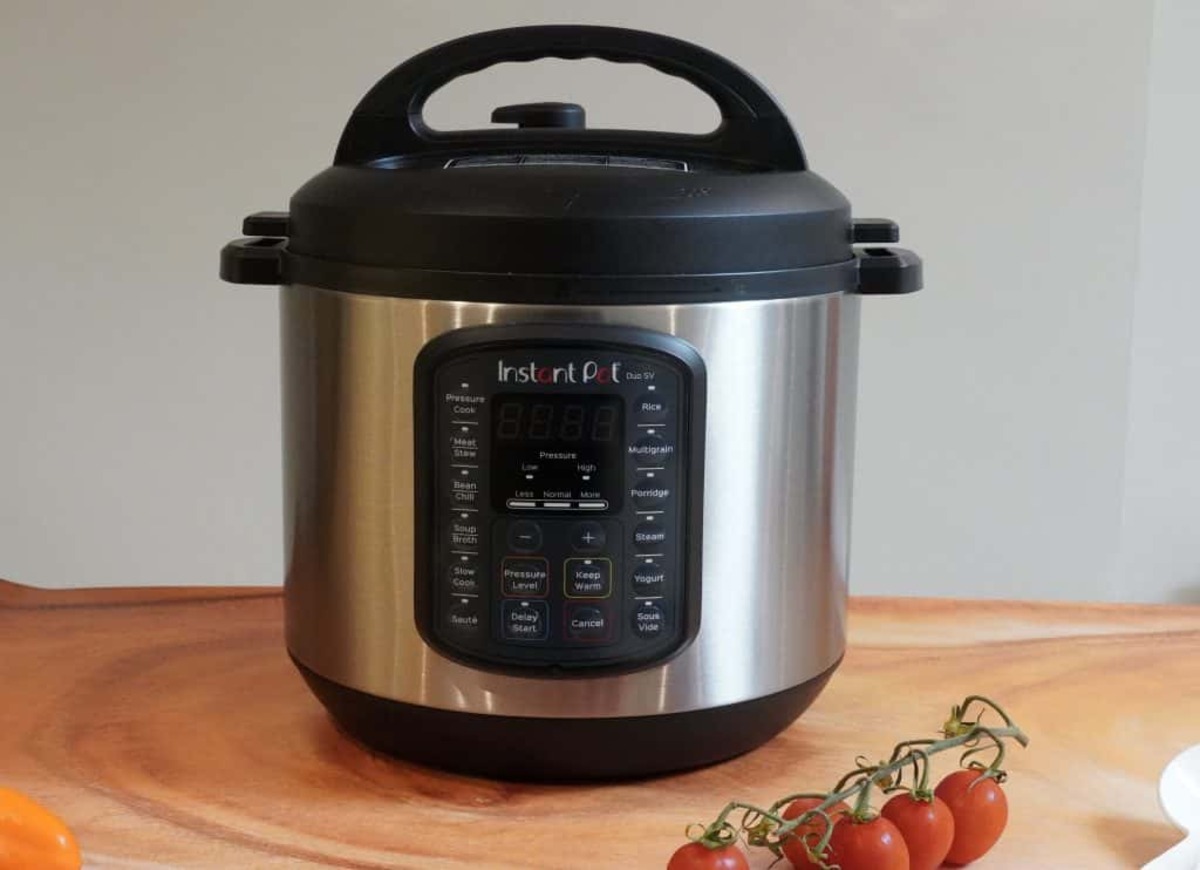
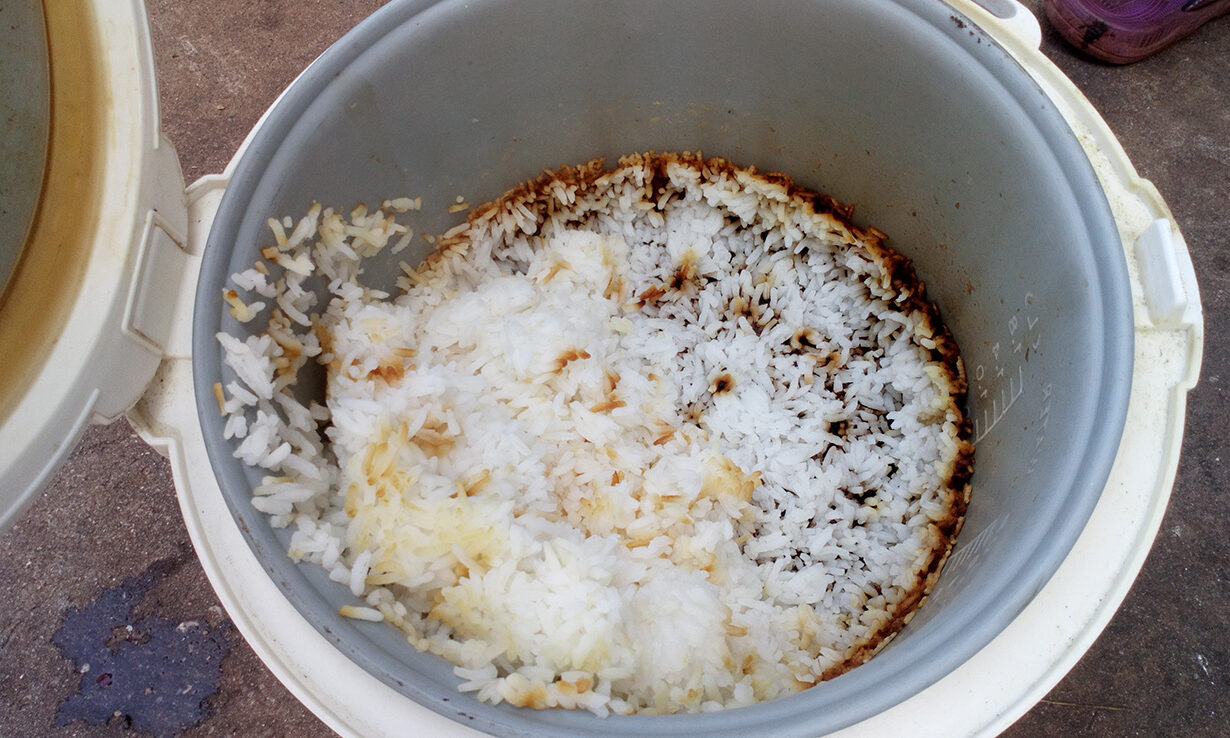

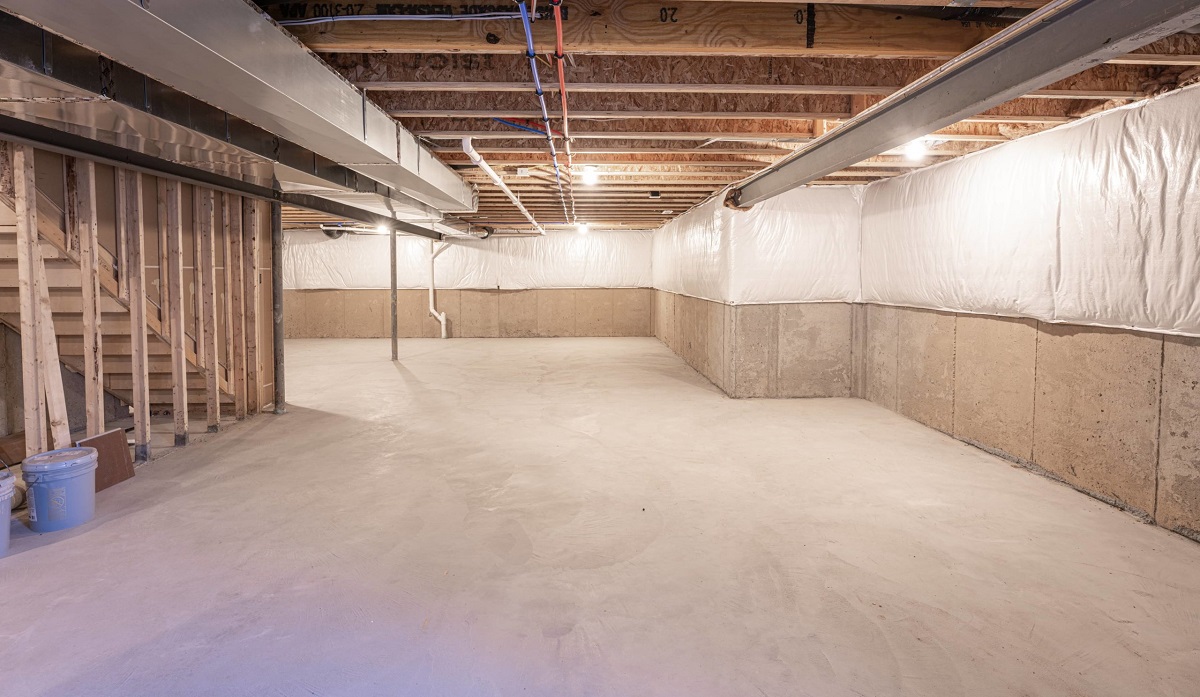

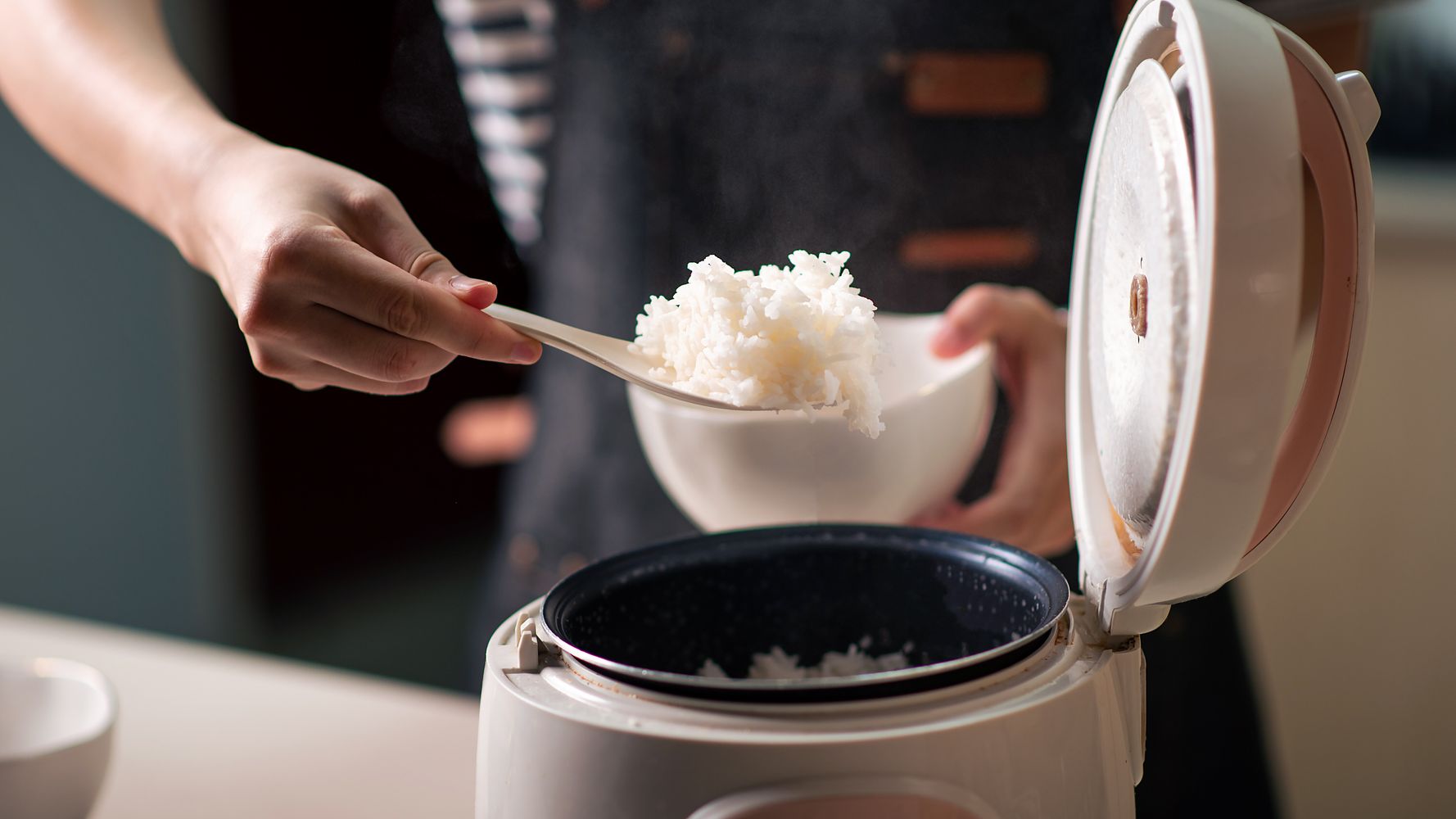



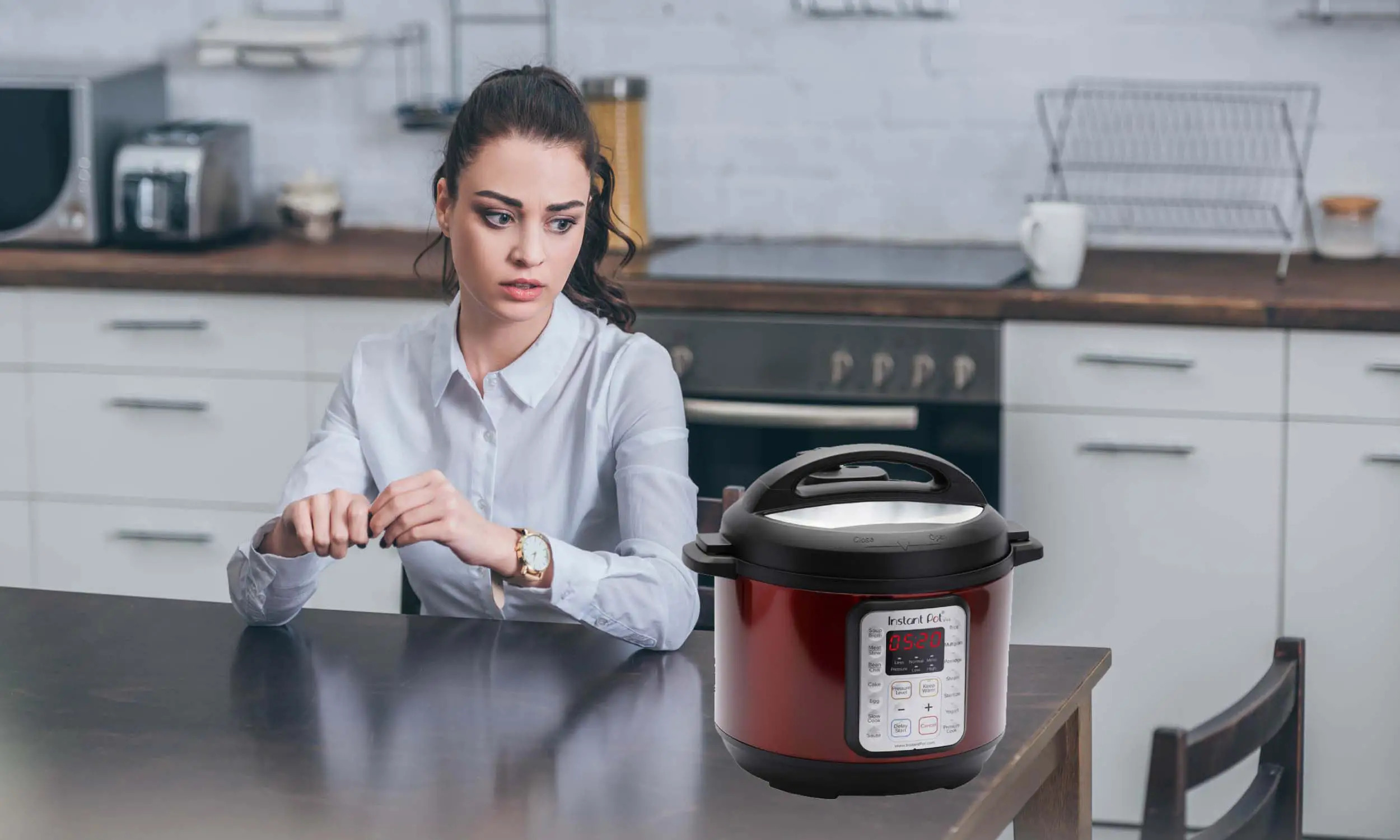
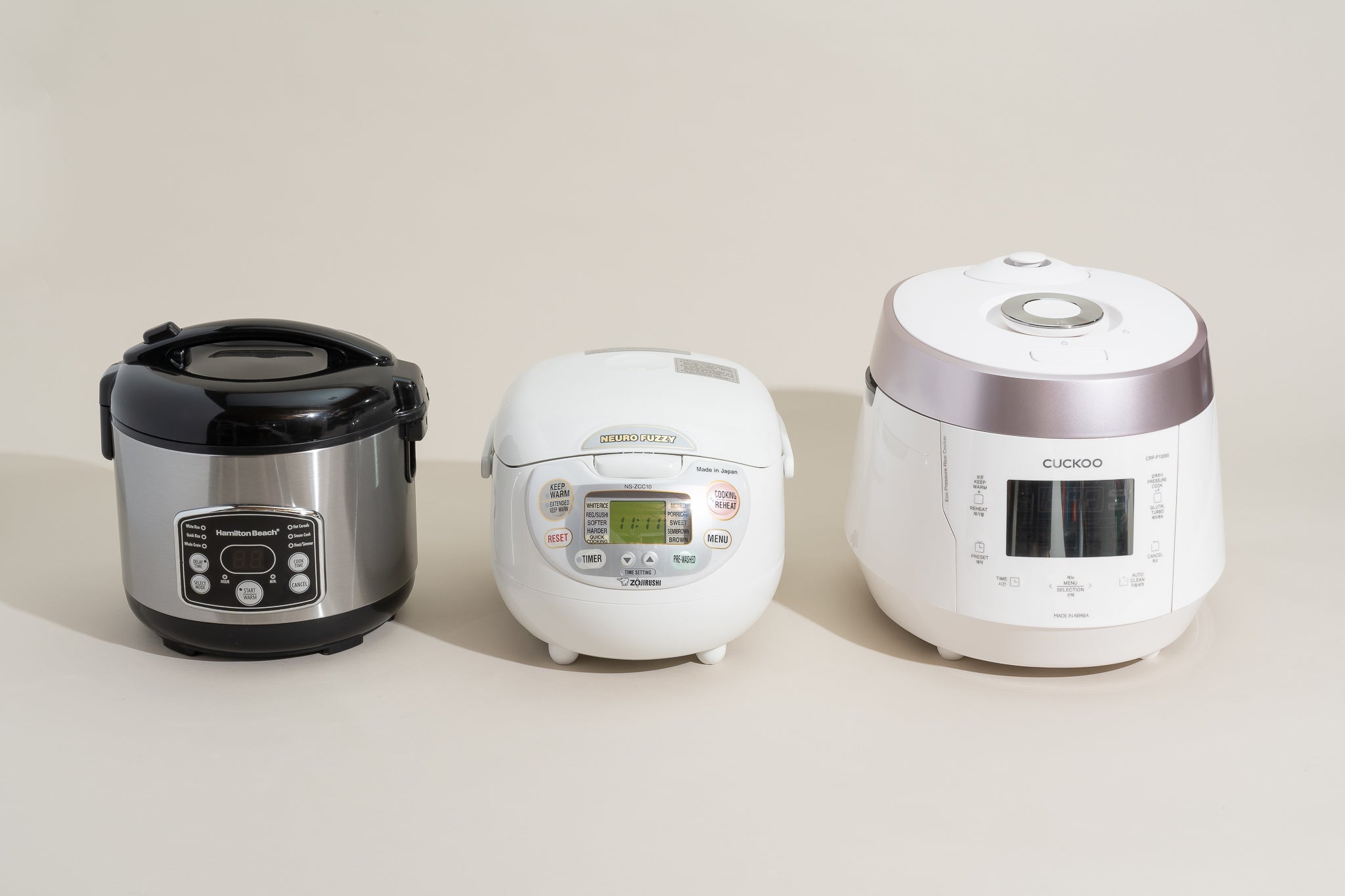
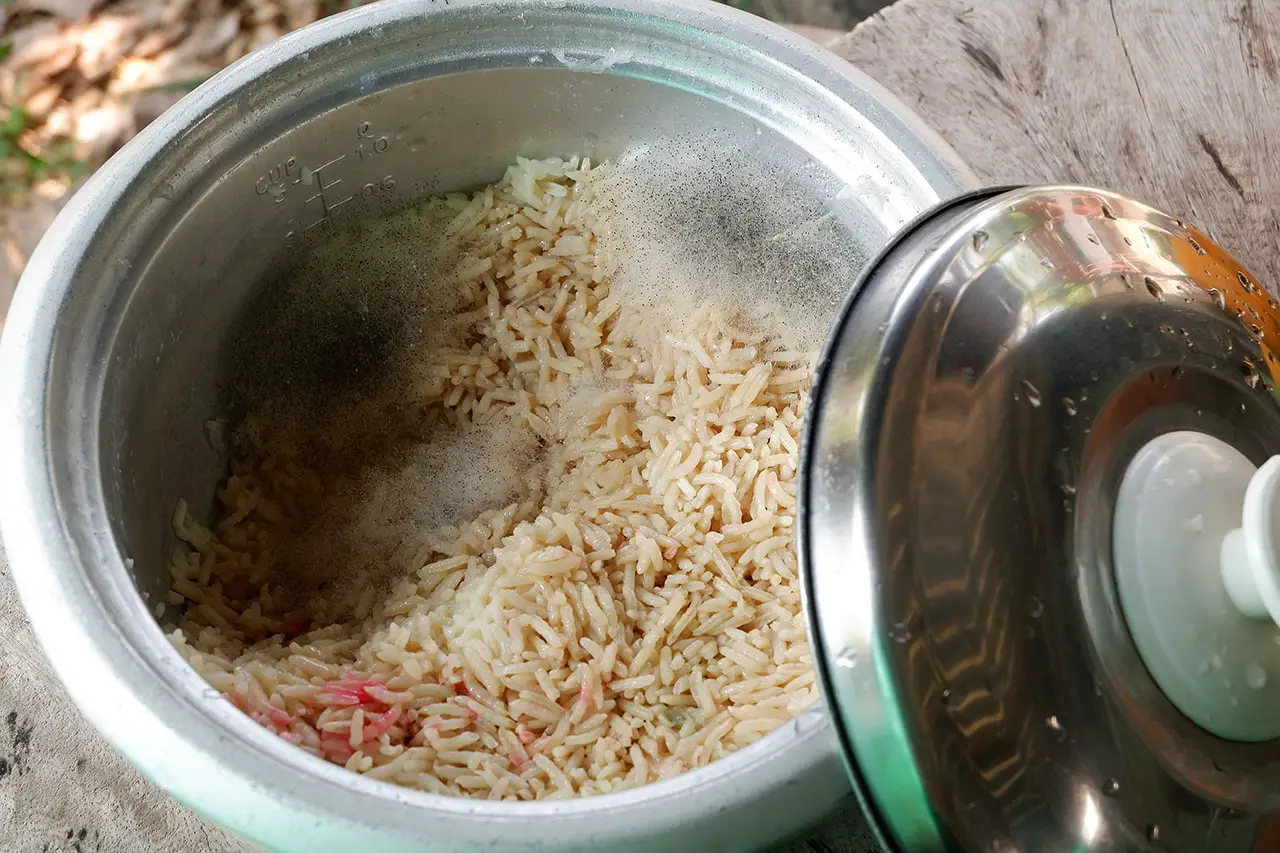

0 thoughts on “Why Is My Rice Mushy In Rice Cooker”